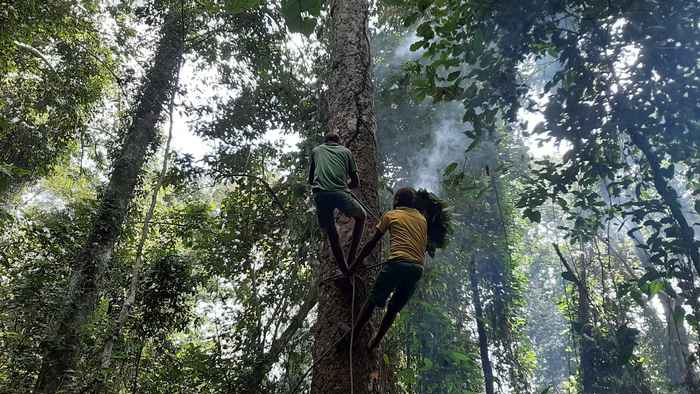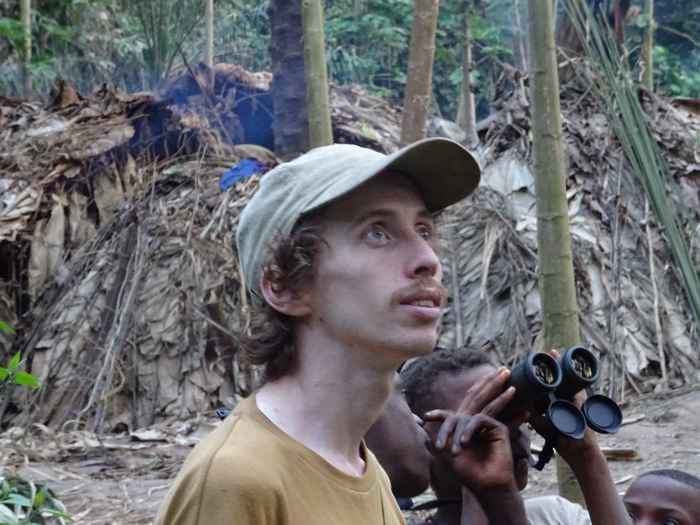Why are our brains so huge?
Ways to acquire and gather food could be a major evolutionary driver of our large brains.
10 February 2023

In the Mbendjele Bayaka community in the Republic of Congo, children as young as 5 years old begin collecting food in their rainforest environment. 'We were lucky enough to be able to observe them during both a wet and a dry season,' says Jorin Veen, first author of the paper, who conducted this research for his master's thesis at the UvA. The research resulted in a dataset with 798 hours of observational data, in which 27 children were observed during their daily food searches.
Without parental help
They spent a third of the time collecting, and half of that time they did so without parental help. 'Furthermore, we saw that boys were more likely to go for fruits and seeds, which often requires risky climbing skills, while the girls were more likely to collect tubers, which are difficult to find and track underground,' said Professor Karline Janmaat, lead author's supervisor and researcher at the Institute for Biodiversity and Ecosystem Dynamics at the UvA.
Gender-based
'This early difference in a gender-based specialization of gathering skills, combined with the high level of food sharing in societies of these modern day gatherers, provides a stable energy and nutrient supply-a supply that has most likely enabled the human species to afford larger brains than our closest relatives.'


Botanical knowledge
The researchers further conducted a botanical knowledge test, showing the children pictures of different parts of food plant species. ’Even at a young age, the children were able to correctly identify the plant species, often after seeing only the trunk,’ Veen said. 'Impressive,' according to Veen. 'Identifying tree species in a tropical forest with exceptionally high species diversity is not easy.'
Last generations
Most, if not all, gathering societies today are moving to a more horticultural and sedentary lifestyle. 'This is no different for the BaYaka; more than half of their contemporary diet consists now of agricultural food,' says Veen. 'This irreversible process will almost certainly affect the development and gathering cognition of these children, perhaps making them one of the last generations to inform us about the development of complex gathering skills and the variety of plant species the human species can eat.'
‘In gathering societies, dependence on agricultural products and a sedentary lifestyle is accompanied by increasing access to industrially produced junk food,’ adds David Raubenheimer, professor of food ecology at the University of Sidney. "The study clearly demonstrates the importance of forest plant foods for the BaYaka and the harmful effects of current logging and agricultural intensification, says Veen, ‘Even more important than documenting this rapid process is listening to the voices of the gatherers involved.’
Publication
Development of embodied capital: Diet composition, foraging skills, and botanical knowledge of forager children in the Congo Basin. Jorin Veen, Haneul Jang, David Raubenheimer, Bryndan O. C. M. van Pinxteren, Vidrige Kandza, Patrick G. Meirmans, Nicole M. van Dam, Susanne Dunker, Petra Hoffmann, Anja Worrich and Karline R. L. Janmaat. Front. Ecol. Evol., 08 February 2023 Sec. Behavioral and Evolutionary Ecology. Volume 11 - 2023 | https://doi.org/10.3389/fevo.2023.935987